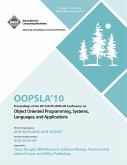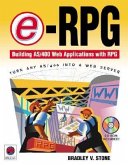Scott W. Ambler
Building Object Applications that Work
Scott W. Ambler
Building Object Applications that Work
- Broschiertes Buch
- Merkliste
- Auf die Merkliste
- Bewerten Bewerten
- Teilen
- Produkt teilen
- Produkterinnerung
- Produkterinnerung
Reviews the entire process of building object applications from analyzing the project, to designing a user-friendly interface and testing the functionality of your approaches.
Andere Kunden interessierten sich auch für
![Inside the Object Model Inside the Object Model]() David M. PapurtInside the Object Model77,99 €
David M. PapurtInside the Object Model77,99 €![Introduction to JavaScript Object Notation Introduction to JavaScript Object Notation]() Lindsay BassettIntroduction to JavaScript Object Notation22,99 €
Lindsay BassettIntroduction to JavaScript Object Notation22,99 €![A Guide to Matlab(r) Object-Oriented Programming A Guide to Matlab(r) Object-Oriented Programming]() Andy H RegisterA Guide to Matlab(r) Object-Oriented Programming115,99 €
Andy H RegisterA Guide to Matlab(r) Object-Oriented Programming115,99 €![Object-Oriented Design in Java Using Java.Util [With CDROM] Object-Oriented Design in Java Using Java.Util [With CDROM]]() Nicholas J. De LilloObject-Oriented Design in Java Using Java.Util [With CDROM]53,99 €
Nicholas J. De LilloObject-Oriented Design in Java Using Java.Util [With CDROM]53,99 €![OOPSLA 10 Proceedings of 2010 ACM SIGPLAN Conference on Object Oriented Programming, Systems, Languages and Applications OOPSLA 10 Proceedings of 2010 ACM SIGPLAN Conference on Object Oriented Programming, Systems, Languages and Applications]() Oopsla 10 Conference CommitteeOOPSLA 10 Proceedings of 2010 ACM SIGPLAN Conference on Object Oriented Programming, Systems, Languages and Applications236,99 €
Oopsla 10 Conference CommitteeOOPSLA 10 Proceedings of 2010 ACM SIGPLAN Conference on Object Oriented Programming, Systems, Languages and Applications236,99 €![E-Rpg: Building AS/400 Web Applications with RPG E-Rpg: Building AS/400 Web Applications with RPG]() Bradley V StoneE-Rpg: Building AS/400 Web Applications with RPG89,99 €
Bradley V StoneE-Rpg: Building AS/400 Web Applications with RPG89,99 €![Navigating Challenges of Object Detection Through Cognitive Computing Navigating Challenges of Object Detection Through Cognitive Computing]() Navigating Challenges of Object Detection Through Cognitive Computing130,99 €
Navigating Challenges of Object Detection Through Cognitive Computing130,99 €-
-
-
Reviews the entire process of building object applications from analyzing the project, to designing a user-friendly interface and testing the functionality of your approaches.
Produktdetails
- Produktdetails
- Verlag: Cambridge University Press
- Seitenzahl: 508
- Erscheinungstermin: 17. Juli 2015
- Englisch
- Abmessung: 254mm x 178mm x 27mm
- Gewicht: 945g
- ISBN-13: 9780521648264
- ISBN-10: 0521648262
- Artikelnr.: 21095224
- Herstellerkennzeichnung
- Libri GmbH
- Europaallee 1
- 36244 Bad Hersfeld
- gpsr@libri.de
- Verlag: Cambridge University Press
- Seitenzahl: 508
- Erscheinungstermin: 17. Juli 2015
- Englisch
- Abmessung: 254mm x 178mm x 27mm
- Gewicht: 945g
- ISBN-13: 9780521648264
- ISBN-10: 0521648262
- Artikelnr.: 21095224
- Herstellerkennzeichnung
- Libri GmbH
- Europaallee 1
- 36244 Bad Hersfeld
- gpsr@libri.de
Part I. Introduction to Building Object Applications: 1. Where we've been before
object
oriented concepts and techniques; Part II. Object
Oriented Analysis Design, and Architecture: 2. Bubbles and lines
useful diagrams for object
oriented analysis and design; 3. Improving your design
a class
type architecture; 4. Reusing your development efforts
object
oriented patterns; 5. Development in the 90s and beyond
designing distributed object
oriented applications; Part III. Object
Oriented Construction: 6. Measuring and improving the quality of your work
object
oriented metrics; 7. Choosing an object
oriented language
comparing the leading languages; 8. Building your application
effective object
oriented construction techniques; 9. Making your application usable
object
oriented user interface design; 10. Making your objects persistent
object
orientation and databases; 11. Integrating legacy code
wrapping; Part IV. Object
oriented Testing: 12. Making sure your applications work
full life
cycle object
oriented testing (FLOOT); Part V. Conclusion: 13. Where to go from here
personal success strategies; Appendix A. Notation summary; Appendix B. Visual glossary.
object
oriented concepts and techniques; Part II. Object
Oriented Analysis Design, and Architecture: 2. Bubbles and lines
useful diagrams for object
oriented analysis and design; 3. Improving your design
a class
type architecture; 4. Reusing your development efforts
object
oriented patterns; 5. Development in the 90s and beyond
designing distributed object
oriented applications; Part III. Object
Oriented Construction: 6. Measuring and improving the quality of your work
object
oriented metrics; 7. Choosing an object
oriented language
comparing the leading languages; 8. Building your application
effective object
oriented construction techniques; 9. Making your application usable
object
oriented user interface design; 10. Making your objects persistent
object
orientation and databases; 11. Integrating legacy code
wrapping; Part IV. Object
oriented Testing: 12. Making sure your applications work
full life
cycle object
oriented testing (FLOOT); Part V. Conclusion: 13. Where to go from here
personal success strategies; Appendix A. Notation summary; Appendix B. Visual glossary.
Part I. Introduction to Building Object Applications: 1. Where we've been before
object
oriented concepts and techniques; Part II. Object
Oriented Analysis Design, and Architecture: 2. Bubbles and lines
useful diagrams for object
oriented analysis and design; 3. Improving your design
a class
type architecture; 4. Reusing your development efforts
object
oriented patterns; 5. Development in the 90s and beyond
designing distributed object
oriented applications; Part III. Object
Oriented Construction: 6. Measuring and improving the quality of your work
object
oriented metrics; 7. Choosing an object
oriented language
comparing the leading languages; 8. Building your application
effective object
oriented construction techniques; 9. Making your application usable
object
oriented user interface design; 10. Making your objects persistent
object
orientation and databases; 11. Integrating legacy code
wrapping; Part IV. Object
oriented Testing: 12. Making sure your applications work
full life
cycle object
oriented testing (FLOOT); Part V. Conclusion: 13. Where to go from here
personal success strategies; Appendix A. Notation summary; Appendix B. Visual glossary.
object
oriented concepts and techniques; Part II. Object
Oriented Analysis Design, and Architecture: 2. Bubbles and lines
useful diagrams for object
oriented analysis and design; 3. Improving your design
a class
type architecture; 4. Reusing your development efforts
object
oriented patterns; 5. Development in the 90s and beyond
designing distributed object
oriented applications; Part III. Object
Oriented Construction: 6. Measuring and improving the quality of your work
object
oriented metrics; 7. Choosing an object
oriented language
comparing the leading languages; 8. Building your application
effective object
oriented construction techniques; 9. Making your application usable
object
oriented user interface design; 10. Making your objects persistent
object
orientation and databases; 11. Integrating legacy code
wrapping; Part IV. Object
oriented Testing: 12. Making sure your applications work
full life
cycle object
oriented testing (FLOOT); Part V. Conclusion: 13. Where to go from here
personal success strategies; Appendix A. Notation summary; Appendix B. Visual glossary.



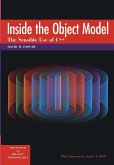
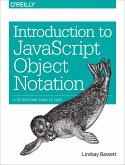
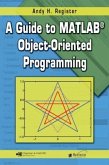
![Object-Oriented Design in Java Using Java.Util [With CDROM] Object-Oriented Design in Java Using Java.Util [With CDROM]](https://bilder.buecher.de/produkte/59/59798/59798861m.jpg)
